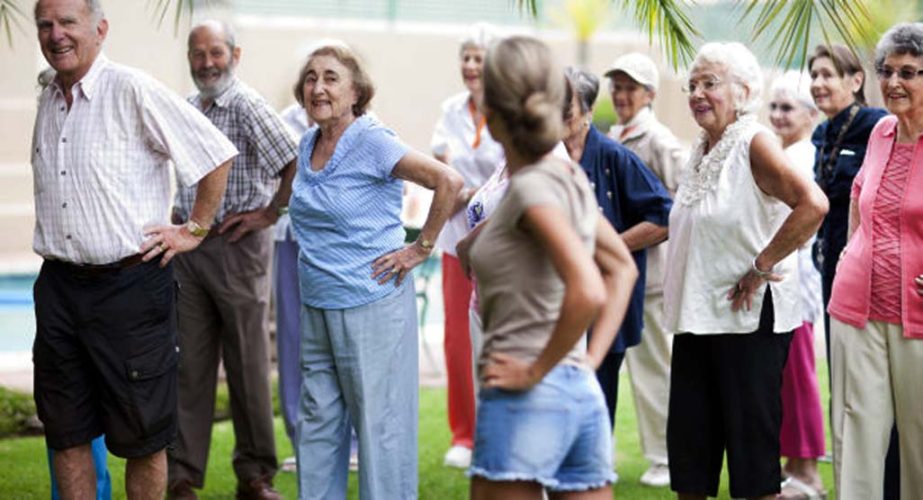
Life Desk :Healthy and active lifestyle with a lot of physical activity, either through routine or leisure activities, is one of the ways to stay healthy and age gracefully.Physical exercise may not always be possible for the elderly as the ageing process also involves reduction in muscle mass, wear and tear of muscles and joints, etc. The impact of poor health can directly affect the motivation to exercise. But physical activity can actually go a long way in helping anyone overcome illnesses.Why do you need to stay fit?Leading a sedentary lifestyle can pave way for diseases such as obesity and heart disease. It weakens bones and make the elderly dependent on someone else. When dependency leads to frustration, it can also push them into depression.Benefits of staying active in old age:Helps to stay independentBoosts metabolic rate, helps in healthy weight management and maintains ideal muscle mass Sense of balancing is maintained, and reflexes are kept active, which in turn reduces risk of fallsImproves flexibility of the bodyIncreases bone density, and prevents osteoporosisHelps prevent serious health conditions like heart attack, diabetes, stroke, etcElevates mood and reduces risk of depressionExercising in groups can improve social life. A walk in the park also fetches more friendsHow Much Physical Activity is required for the Elderly People?The requirement of physical activity for older adults depends on their health conditions and mobility of the body. Adults aged 65 years or older ideally require:About 30 minutes of moderate exercise, 5 days a week.Muscle strengthening exercises for 2 or more days a week. The muscles of legs, hips, abdomen, shoulders, chest, back and arms must be stretched and strengthened. An elderly person can engage in vigorous aerobic activity, like jogging, aerobics or a game of tennis, if his or her body conditions permit. Consulting a doctor before going for vigorous activity is a must.Physical Activity for SeniorsCardio endurance exercises: The exercises that get your heart pumping include brisk walking, climbing stairs, hiking, cycling, swimming, rowing, dancing and tennis. A schedule that incorporates 30 minutes of any of these, 5 days a week, can help keep up the oxygen levels and therefore energy levels.Strength and power training: Repeated motion using weights or elastic bands can help prevent loss of bone mass and muscle mass. This improves balance and strength and also keeps the reflexes going.Stretching exercises: Stretching your muscles and joints can help keep them in full range of motion. Stretching exercises reduces the impact of injury to the muscles and joints.Ways to Stay Active as You get OlderWater aerobics: Working out in water can be less painful on the muscles and joints.Tai Chi and Qi Gong: These are movements inspired by martial arts and are excellent for improving strength and balance.Yoga: Yoga involves breathing right, stretching exercises and working on individual muscles. This improves strength, flexibility and balance on the body level. It also helps in better maintenance of cognitive skills like memory, concentration and alertness. Yoga is also beneficial to older adults who suffer from aches and pains.Yoga Helps to Stay ActiveDaily life activities: Activities involving daily routine can be made fun and also a means of keeping active. Some such activities include:For light aerobic-type activities – Cleaning the house, gardening, shoppingFor strength training – Lifting young children, carrying groceries or shopping bags, lifting things while doing household chores Stretching – Picking up things from floor, tying shoe lacesSome minor changes in exercise routine can help make exercising a fun activity: Listen to music while exercisingTake photographs with your walking buddies or with the nature at the parkWatch a favorite television program while on the treadmill Play tennis with partners Find an exercise buddy and compare your exercise schedules and weight loss rates.-Internet

